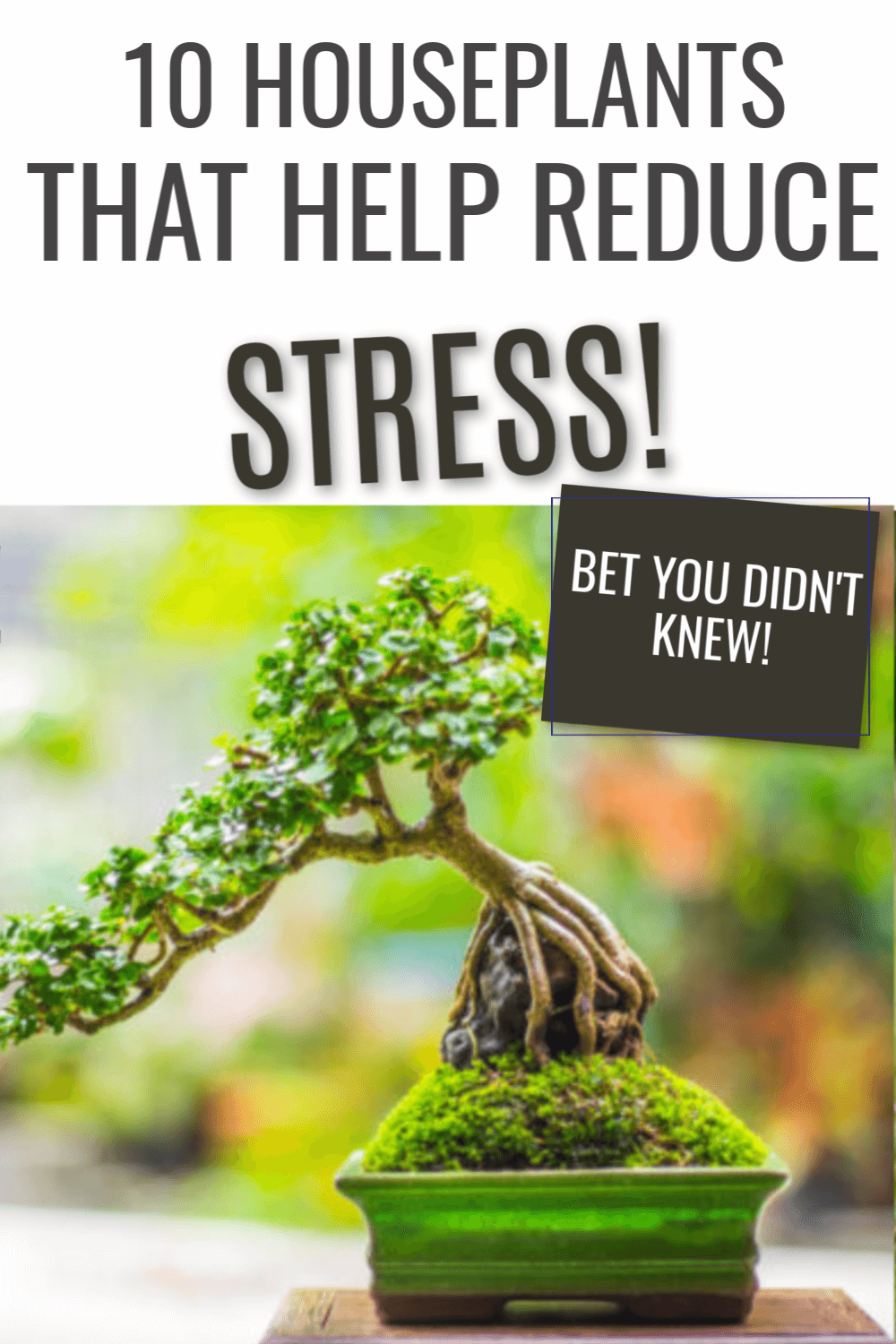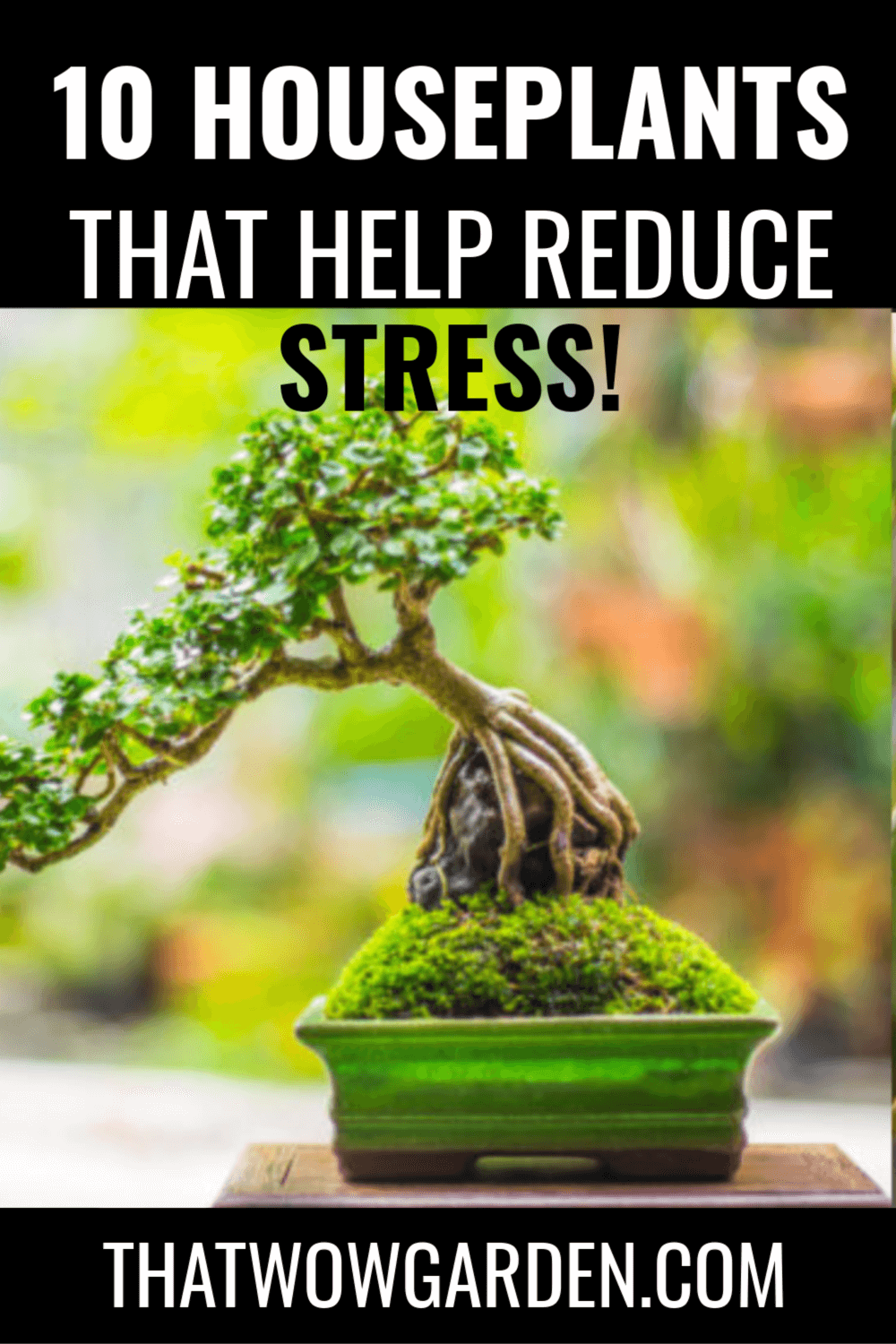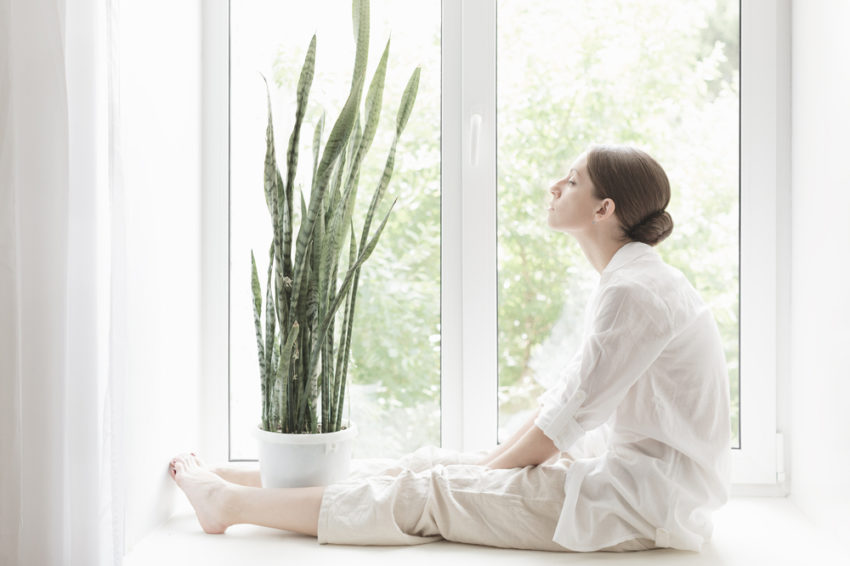A little touch of nature is good for any household no matter what theme you are going for. But houseplants aren’t just good for interior decor. Some chosen houseplants are well known for their miraculous ability to reduce stress and anxiety. Most of us have desk jobs nowadays and inhaling indoor toxins on a regular basis can have an adverse effect on our health. Houseplants can remove toxins and purify the air thus alleviating symptoms of anxiety.
How do House Plants Help with Anxiety and Stress
- House plants help with your attentiveness and reaction time.
- Houseplants boost your mood.
- They also increase your productivity and creativity.
- In addition to that, they can help lower your blood pressure.
10 Plants that Reduce Stress
1. Aloe Vera
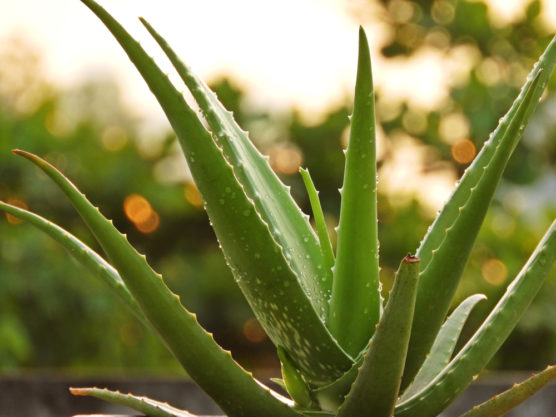
An interesting thing about aloe vera is that it has Crassulacean acid metabolism i.e it consumes energy during the day and releases oxygen at night providing you better sleep. Aloe vera grows wild and long but you can always get small plants for your office desk or your kitchen window. It doesn’t need a lot of maintenance. Just some bright but indirect sunlight and little water. Water once every three weeks and don’t water the leaves. Other than as a decor aloe vera gel is also known for its various skin and hair benefits, it is a great moisturizer and coolant.
2. Areca Palm

Areca Palm, also known as butterfly palm is a beautiful leafy beautiful palm that will give your house the missing natural touch. It is a floor decor and looks good on windows too. Areca palm produces pretty yellow flowers in summer. These natural humidifiers are a real mood booster. Areca palm can get rid of the toxins like formaldehyde, toluene, and xylene.
Place the plant under indirect or artificial light, extreme/direct heat will turn the leaves yellow and curl them downwards as if being burnt. Water the plants just enough to make the soil moist but not soggy.
3. Bonsai
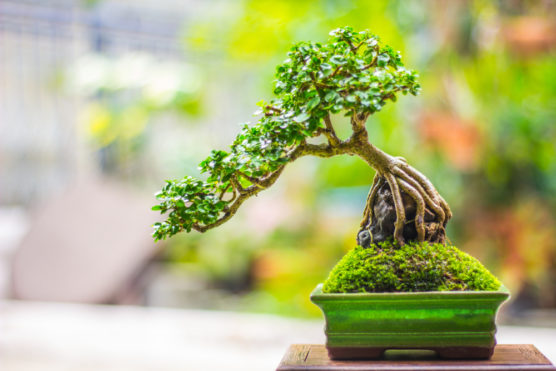
A bonsai is a well-trimmed, trained, and artfully pruned plant grown in tray-like shallow containers. The thing that makes it so beautiful is that they are miniature replicas of a full-grown tree in nature. But it is one of the high maintenance houseplants.
Growing a pre-bonsai can be a task for the artistic green thumbs but you can buy full-grown bonsai from a shop as well. Keep under sunlight and water lightly daily. Carefully trim and prune the plants to keep them small and in shape.
4. Jasmine Plant
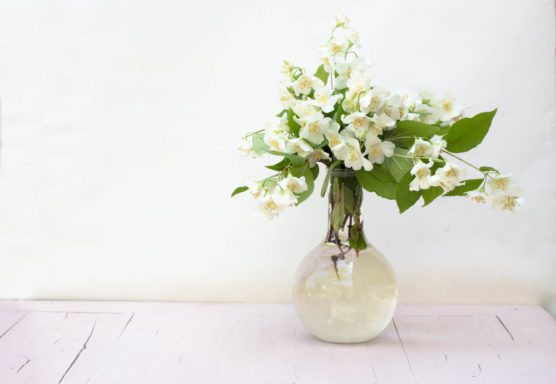
Jasmine plants are generally grown outdoors but some varieties of this sweet-scented plant can be grown indoors as well. It is a shrub and beautiful jasmine flowers bloom in it filling a room with the earthy scent of jasmine. The fragrance is very calming and often used in aromatherapy as well. Studies have shown that the fragrance of jasmine can release GABA (a chemical that affects nerve cells improving mood and reduces anxiety).
Place it near a south-facing window so that it gets bright yet indirect sunlight for at least 4 hours a day. Like most house plants don’t overwater the plant just make sure the soil is moist.
5. Lavender
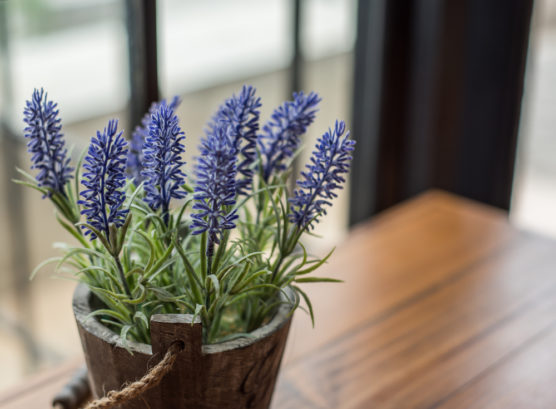
Lavender is a plant native to Europe. You will see fields of lavender in Mediterranian regions blooming with one of the most majestic scents out there. The scent of lavender is well known across the world. Dried lavender is used for potpourri whereas lavender essential oil is used in aromatherapy or perfumes. The fragrance is quite relaxing, so having it as a house plant is a really good idea. But growing it indoors comes with its challenges for sure. Some good varieties of lavender to grow indoors include ‘Goodwin Creek Grey,’ ‘Munstead’, and ‘Little Lottie’.
Place the plant under bright and filtered sunlight (preferably a south-facing windowsill). Rotate the pot so that the plant receives equal sunlight from all sides. The ideal temperature for growing lavender is between 50-70 degrees Fahrenheit. Water it enough so that the soil is moist but not soggy.
6. Snake Plant
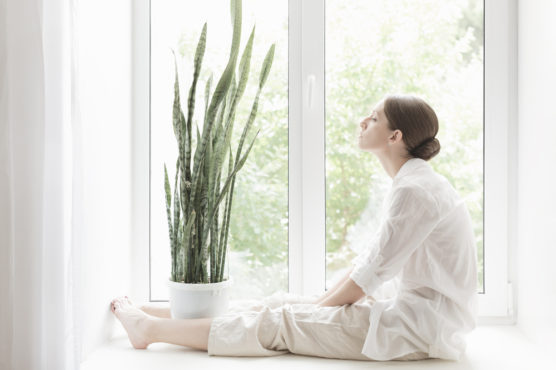
Snake plant, also commonly known as ‘Mother-In-Law’s Tongue’ is a beautiful plant with wide green leaves that can bring life to any room. This plant is widely popular and can be used for both floor and desk decor. Snake plant is known to alienate toxins like benzene, formaldehyde, xylene, toluene, and trichloroethylene and improve the quality of the air you breathe inside your home. It is also known to help with headaches, stress, and breathing problems.
For watering a snake plant make sure that the soil is almost completely dry. Also, always water under the leaves to avoid fungal growth. Wipe out the leaves with a cloth once in a while to get rid of any accumulated dirt. Snake plants will turn yellow if placed in bright light, place them slightly away from a south-facing or a west-facing window.
7. Succulents

Succulents are all the hype now, the reasons being they need little to no maintenance and they are just so pretty. There are various things to do with succulents indoors. You can make a terrarium and pot a variety of little succulents inside. You can also go for a small pot to keep on your desk and accessorize it with cute and colorful pebbles. Or you can choose a succulent like aloe vera or cactus as floor decorations. Other than looking pretty succulent also aids in purifying the air by eliminating toxins and increasing moisture inside your home.
Most succulent needs 4-8 hours of sunlight. Rotate the pot regularly so that light gets evenly distributed. Water them only when at least one inch of the soil’s surface is completely dry.
8. Chamomile
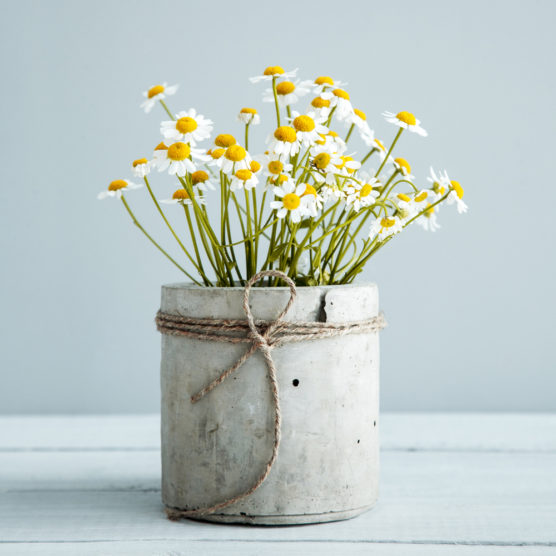
Chamomile is known around the world for its stress-relieving properties. People make tea from dried chamomile leaves to induce sleep and reduce stress. Its oil is used for aromatherapy as well. In addition to that they have really pretty daisy-like white florals with yellow center blooming from the plant.
Just like most of the plants in the list chamomile will need bright filtered sunlight. Water the plant once every week to keep the soil moist. It takes about 60 days for a plant to get leaves. You can harvest the leaves to make yourself a calming cup of chamomile tea.
9. Basil
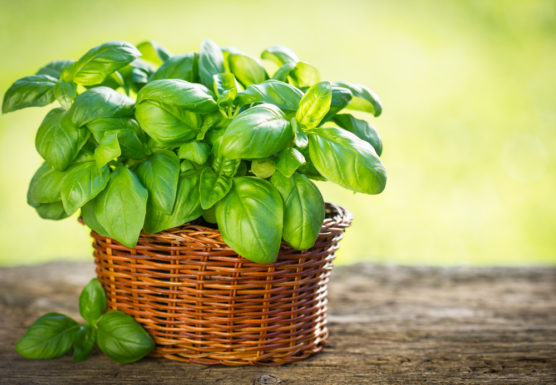
You may have this in your herb garden but having basil as a houseplant has its own benefits. From making a detox drink to treating sore throats basil leaves are a well known natural remedy. They are also known to help with stomach cancer and their paste can help reduce pain from an insect bite. Having a basil plant indoors can improve productivity and purify the air. Medium sunlight and water can give you a healthy basil plant to keep in your home.
10. English Ivy
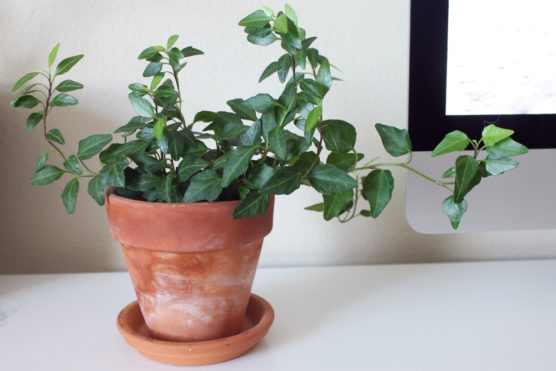
English Ivy is recognized by NASA as one of the best natural air purifiers. You either keep it on a high shelf so that it grows down gracefully or use a support pole to help it climb, personally I find the former much chicer. This plant reduces the effects of mold that can cause high-risk allergies for people suffering from asthma. To grow a healthy English ivy you would need bright-filtered sunlight, well-drained soil, and pot with good drain holes.

